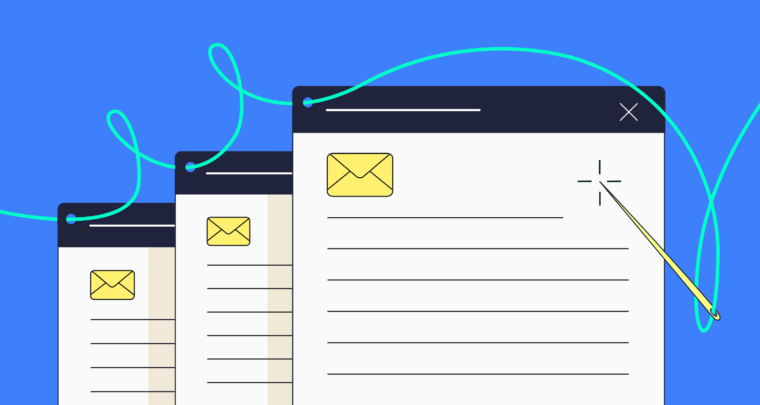
That typo or grammar goof you just made in an email might make a bad impression. It could signal that you lack attention to detail. At worst, it could make you seem less intelligent, conscientious, and trustworthy.
Although email typos happen to everyone, they happen less frequently to those who take a little extra time to proofread. Here’s a foolproof step-by-step guide to getting it right before you hit send.
1 Get your contact’s name right.
Did you spell your contact’s first and last name correctly? It’s important. And, if you doubt that, think of the last time you got an email from someone who got your name wrong. At the very least, you probably groaned or rolled your eyes. We get annoyed when people misspell our names because we assume they don’t care enough about us to pay attention to that basic detail.
If you’re uncertain about the spelling of your contact’s name, do a little research to see if you can come up with it via Google or social media. If all else fails, use a generic greeting like “Hi there” that doesn’t use a first name.
2 Check your tone.
Does your email sound cold or terse? It might. Often, what sounds fine in our heads doesn’t come across well in text. When you don’t stop to review and proofread your email before you send it, you risk being misinterpreted.
The trick here is to apply some empathy. Clear your head and imagine you’re receiving your email rather than sending it. Does anything you’ve written sound negative or even hostile? There’s a big difference between “I’m looking forward to chatting with you” and “I’ll be expecting your call.” One is friendly and positive; the other sounds as though you’re saying “You’d better call or else.”
3 Make sure you’ll be understood.
Make sure your recipient has enough details to understand what you’ve written. Remember that you and your recipient may not have all the same information—the things you understand aren’t necessarily things your recipient will know. Reread your email with this in mind and fill in the blanks as needed.
4 Check for clarity.
Make sure what you’ve written reads smoothly and conveys your precise meaning. Look for unclear pronoun references.
Scan your emails for words like it or they and then make sure your text conveys what those words refer to. If not, rewrite to replace those pronouns with something concrete.
Hold what after the keynote? What has good attendance?
Better. But we can rewrite to simplify the sentence and avoid repeating the word workshop.
Keep your sentences simple and direct. Emails written at a third-grade reading level have significantly better response rates. Long, complex sentences and big words can make your text more challenging to read for a busy person who’s rushing through emails. Do consider your audience, however. If you’re writing to a doctor of sociology to ask for an interview, go ahead and use lush language and more complex structure. Otherwise, make “simple is better” your default.
5 Watch out for wordiness.
Part of simplifying your text involves streamlining it. Eliminate filler words and phrases. Get rid of adverbs and use stronger verbs. (Instead of incredibly happy, try overjoyed, thrilled, or ecstatic. Instead of ran swiftly, how about dashed or sprinted?)
Consider George Orwell’s six rules of writing:
- Never use a metaphor, simile, or other figures of speech which you are used to seeing in print.
- Never use a long word where a short one will do.
- If it is possible to cut a word out, always cut it out.
- Never use the passive where you can use the active.
- Never use a foreign phrase, a scientific word, or a jargon word if you can think of an everyday English equivalent.
- Break any of these rules sooner than say anything outright barbarous.*
*About Orwell’s rule #6, see our rule #2.
6 Proofread carefully.
Up to this point, we’ve been talking about proofreading in the broader terms of a developmental edit. Now, it’s time to get down to the nitty gritty and proofread line-by-line. Have you spelled everything correctly? Did you use the proper homonyms? (Did you type “There going to the festival” when you meant to type They’re?) Is your punctuation on point?
An app like Grammarly will help you catch and fix your errors. But keep in mind that it’s a tool to enhance your proofreading ability, not replace the need for proofreading altogether. The advantage of using a proofreading app is that every mistake the app catches will teach you something about your writing and ultimately make you a better writer.
7 Sit on it.
Some emails need a while to simmer, especially if they’re sensitive. Let’s say you have to write an email to report the inappropriate conduct of a coworker, or you have to draft a performance review for someone whose performance hasn’t exactly been stellar. Emotion can make you write things you’ll later regret.
Draft your email in your word processor rather than your email client so you’re not tempted to send it impulsively before you’ve given it a thorough review. If you’re able to hold off for a bit, sit on that email for a day before sending it. When you reread your email in the light of a new day, you’ll often find things to revise, especially in terms of tone and clarity.
At the very least, make sure the unsend feature is enabled in your email client. (Here’s how to do it in Gmail.) The few seconds of time it will buy after you’ve hit Send will occasionally rescue you from being owned outright by a glaring typo. I once received an email with the subject line “This learning toy made my child crap with glee!”
I’m pretty sure that’s not what the sender meant.







